Filipino seafarers play a crucial role in global trade, facing occupational hazards that demand strict health standards. Ensuring medical readiness before deployment is essential for their well-being and maritime safety.
This article summarizes five years (2020-2024) of Halcyon Health Network, Inc. (Halcyon) data on seafarers' pre-employment medical examinations (PEME) under Skuld standards, analysing health trends and medical conditions to assess the effectiveness of these evaluations.
Trends in PEME status
Graph 1. Distribution of status of Pre-Employment Medical Examination from 2020 to 2024
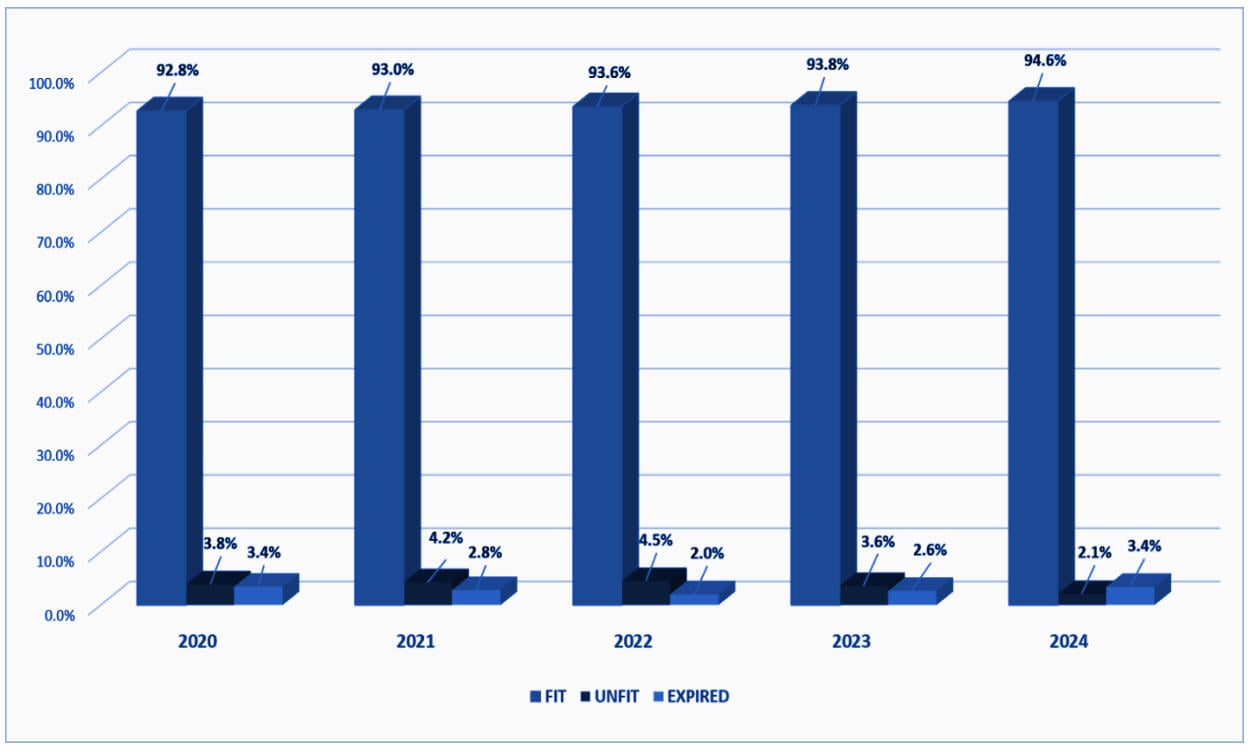
In the past five years, fitness rates increased steadily, reaching 94.6% in 2024. Unfit cases declined to 2.1%, while expired PEMEs fluctuated, peaking at 3.4% in 2024. Expired PEME refers to cases where crew members were unable to complete their PEME within the required timeframe.
This can happen for several reasons, including weight management and managing medical conditions such as high blood pressure or elevated blood sugar levels which must be controlled to acceptable limits before they can pass the medical examination and post-operative recovery. Until these medical concerns are resolved, their PEME remains expired.
Table 1. Top medical conditions causing unfitness
| Gallbladder stone |
| Hypertension with maintenance medication |
| Hypertension and type 2 diabetes mellitus, both requiring maintenance medications |
| Kidney stone |
| Hearing loss |
| Color vision deficiencies not passing the STCW code requirements |
| Tuberculosis of lung |
| Type 2 diabetes mellitus with maintenance medication |
| Abnormal results of cardiovascular function studies |
| Does not comply with the visual acuity standards in STCW code |
Graph 2. The top 10 illnesses causing unfitness for a Skuld PEME from 2020 to 2024
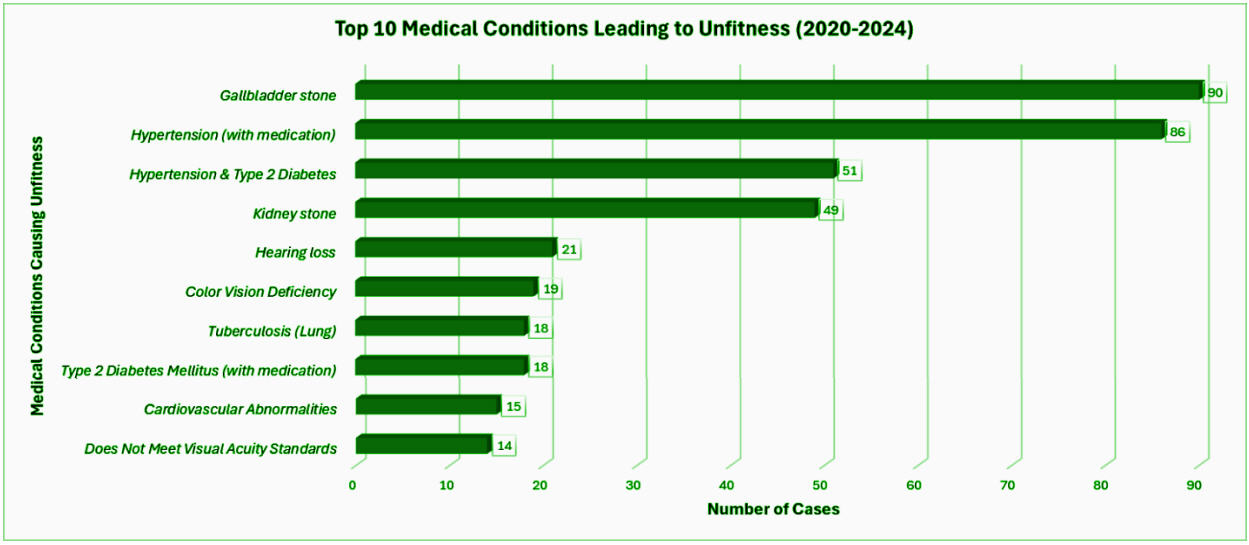
Chronic conditions like hypertension and diabetes remain prevalent, emphasizing the need for lifestyle interventions. Gallbladder and kidney stones highlight dietary concerns, while sensory impairments and tuberculosis underscore the importance of rigorous screenings.
A comprehensive medical examination, such as that provided by Halcyon Health Network, Inc. by Skuld P&I Club standards, is essential because it provides a thorough assessment of an individual's overall health, going beyond the basics offered by a minimal package.
While a minimal medical package may cover routine tests, it often overlooks underlying or developing conditions that could pose serious health risks if left undetected. In contrast, a comprehensive examination evaluates a wider range of health indicators, allowing for the early detection of conditions such as hypertension, diabetes, heart disease, and other chronic illnesses.
Early identification of these issues enables timely intervention, which can prevent complications, reduce healthcare costs in the long run, and improve the individual's quality of life.
Prioritizing a detailed health assessment ensures a more accurate picture of a person's well-being, ultimately promoting better long-term health outcomes.
Age distribution
Graph 3. Age distribution of crew who underwent Skuld PEME in Halcyon from 2020 to 2024
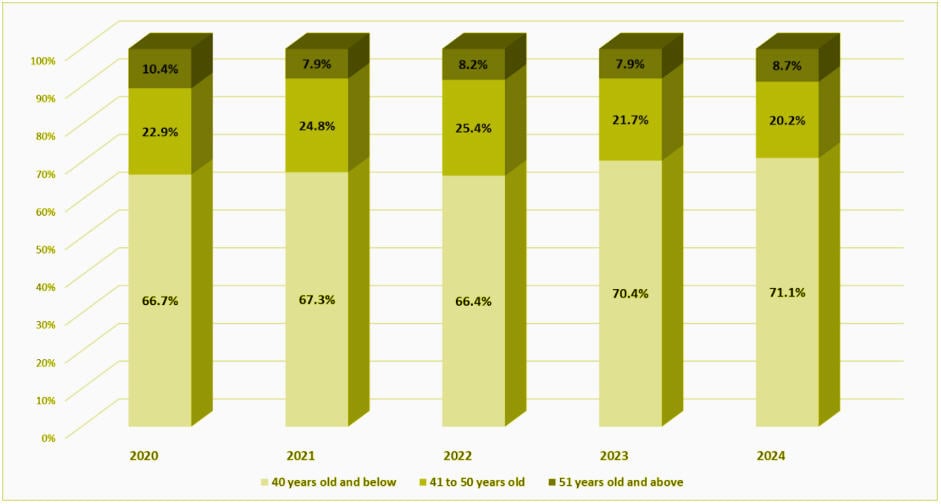
The age distribution of crew members undergoing Skuld PEME at Halcyon was categorized into three groups:
- 40 years and below: Increased from 66.7% in 2021 to 71.1% in 2024, reflecting a younger workforce.
- 41-50 years: Declined to 20.2% in 2024, possibly due to medical clearance challenges.
- 51 years and above: Stable at around 8.7% in 2024, indicating some older crew members meet medical standards.
Body Mass Index and health risks
- Normal weight (18.5-22.9 kg/m²): Only 14.6% to 15.7% of crew members fell within this range.
- Overweight (23.0-24.9 kg/m²): Declined to 19.3% in 2024.
- Obesity Class I (25.0-29.9 kg/m²): Peaked at 53.9% in 2024.
- Obesity Class II (≥30.0 kg/m²): Slightly decreased to 10.7% in 2024.
Graph 4. BMI distribution of crew who underwent Skuld PEME in Halcyon from 2020 to 2024
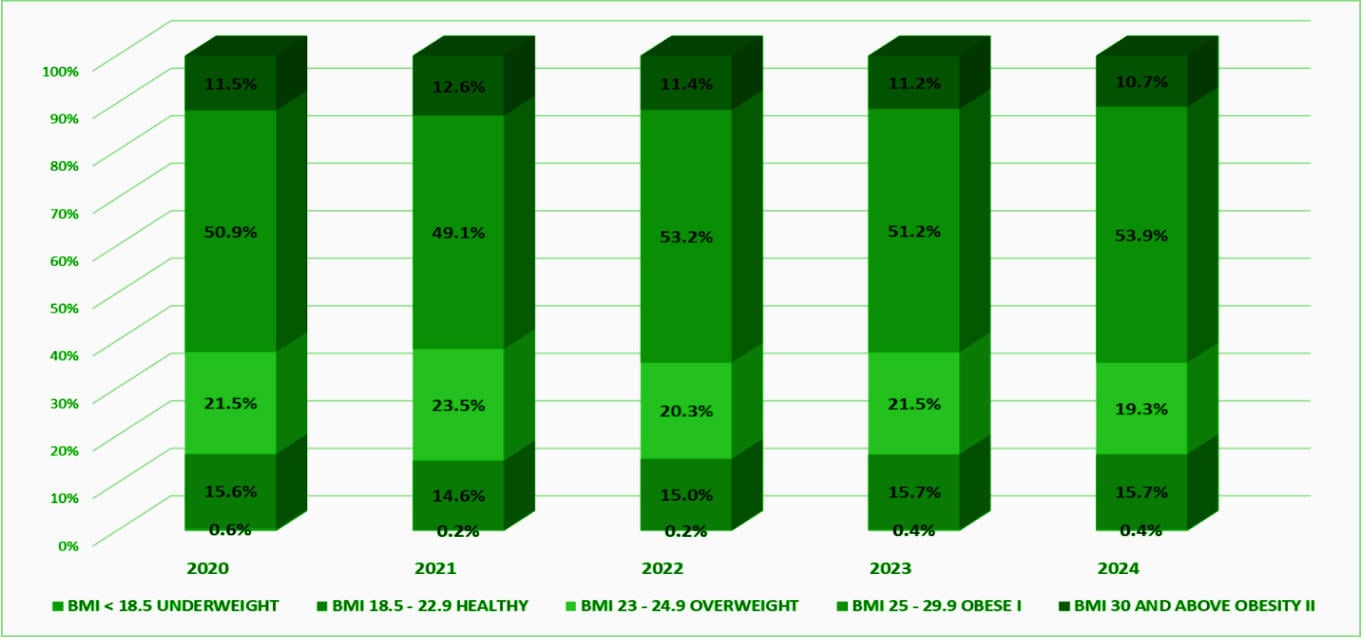
Over 60% of crew members were classified as overweight or obese, increasing risks for cardiovascular disease and metabolic disorders.
Smoking history
Graph 5. Smoking Status of Crew Who Underwent Skuld PEME in Halcyon From 2020 to 2024

Smoking rates dropped from 37% in 2020 to 23% in 2024, reflecting a shift toward healthier lifestyle choices.
Prevalence of hypertension
Graph 6. Prevalence of hypertension for each Skuld PEME in Halcyon from 2020 to 2024
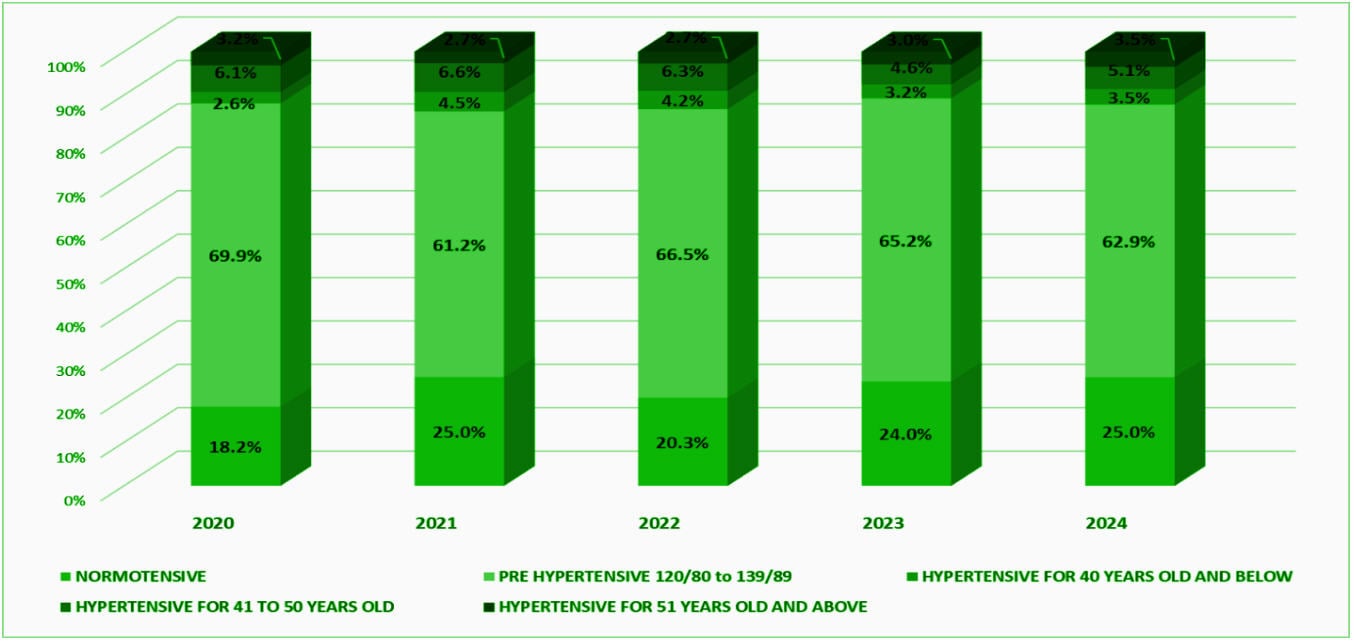
- Normotensive: Improved from 18.2% in 2020 to 25% in 2021, maintaining stability.
- Pre-hypertensive: Declined from 69.9% in 2020 to 62.9% in 2024.
- Hypertensive: Predominantly affected older age groups.
Prevalence of type 2 diabetes mellitus
Graph 7. Prevalence of diabetes for each Skuld PEME in Halcyon from 2020 to 2024
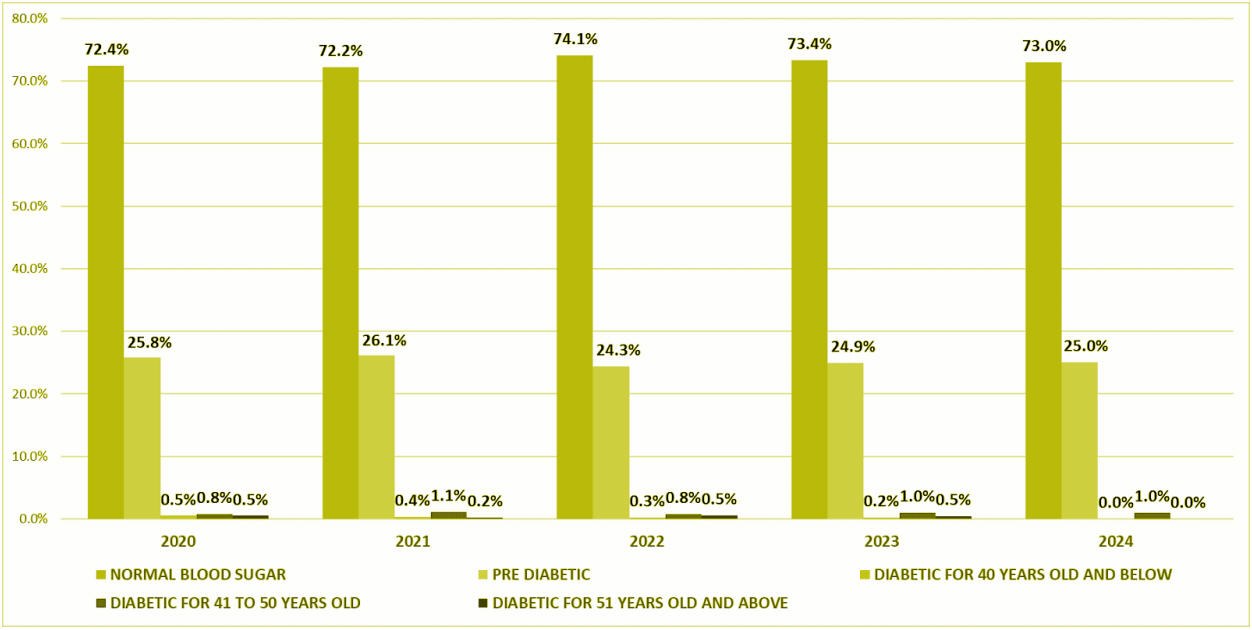
Type 2 diabetes mellitus
- Normal: Over 72% maintained normal blood sugar levels.
- Prediabetes: Remained steady around 25%.
- Diabetes: Most cases were in the 41–50 age group, stabilizing at 1% in 2024.
Seafarers face unique health challenges. To truly support their well-being, seafaring companies must provide access to reliable healthcare tools and services that promote proactive health management.
Digital health-tracking apps help seafarers monitor vital signs and wellness metrics, allowing possible detection of early signs of health concerns. Wellness programs, mental health resources, and nutrition guidance can also play a crucial role in helping seafarers build healthy habits while onboard.
Skuld is grateful to Halcyon Health Network, Inc. for having provided this insight.
